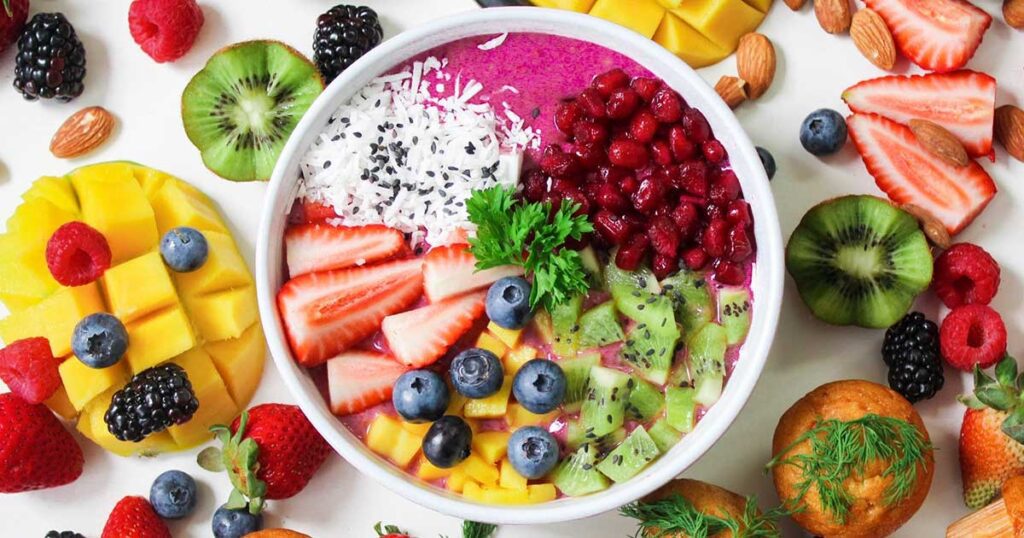Introduction
When it comes to the well-being of our children, one of the most crucial aspects is their diet. Providing healthy food for kids not only helps in their growth and development but also sets the foundation for lifelong eating habits. In this article, we will explore the importance of healthy food, essential nutrients for kids, tips for encouraging healthy eating, creative ways to make healthy food fun, snack ideas, the role of parents and caregivers, balancing treats, common challenges, and solutions, as well as the numerous benefits of a healthy diet.
The Importance of Healthy Food
Ensuring that children consume a balanced and nutritious diet is vital for their overall health and well-being. A healthy diet provides essential nutrients, vitamins, and minerals necessary for growth, cognitive function, and immune system support. It helps children maintain a healthy weight, reduces the risk of chronic diseases, and enhances their energy levels. By instilling healthy eating habits early on, parents can help their children establish a solid foundation for a healthy future.
Essential Nutrients for Kids
Children have specific nutrient requirements to support their growth and development. Including a variety of nutrient-dense foods in their diet is essential. Nutrients like protein, carbohydrates, healthy fats, vitamins, and minerals are crucial for their optimal functioning. Incorporating sources of lean proteins, whole grains, fruits, vegetables, and dairy products can help meet these nutritional needs. Additionally, omega-3 fatty acids, iron, and calcium play significant roles in their development and should be included in their diet.
Tips for Encouraging Healthy Eating
Encouraging healthy eating habits in children can sometimes be a challenge. Here are some practical tips to make the process easier:
Lead by Example: Children often imitate their parents’ behaviors. Show them the importance of healthy eating by making nutritious choices yourself.
Get Creative: Make meals fun and engaging by presenting them in creative ways. Use cookie cutters to shape fruits and vegetables, or create colorful food arrangements on their plates.
Involve Kids in Meal Planning: Let children be part of the decision-making process when planning meals. Take them grocery shopping and allow them to choose healthy options.
Make Healthy Food Accessible: Keep a variety of healthy snacks readily available, such as cut-up fruits, vegetable sticks, and yogurt. This makes it easier for children to make nutritious choices.
Set Consistent Meal Times: Establish regular meal and snack times to create a structured routine. This helps in preventing excessive snacking and ensures children eat balanced meals.
Creative Ways to Make Healthy Food Fun
Making healthy food exciting and enjoyable can encourage children to embrace nutritious options. Here are some creative ideas:
Food Art and Shapes
Colorful Platters
Create fun food art by arranging fruits, vegetables, and other healthy ingredients into appealing shapes and designs. Make a smiley face on a plate using sliced fruits, or build a vegetable house with carrot sticks and cucumber slices.
Arrange a variety of colorful fruits and vegetables on a platter. Encourage children to pick and choose their favorites. This not only makes the meal visually appealing but also introduces them to different flavors and textures.
Smoothie Creations
Involve children in making their own smoothies. Provide a selection of fruits, yogurt, and healthy add-ins like spinach or flaxseed. Let them blend their creations and enjoy the delicious results.
Veggie Pizzas
Instead of traditional pizza, use whole wheat tortillas or pita bread as a base. Let children create their own veggie pizzas by adding colorful vegetable toppings. This gives them the opportunity to experiment with different vegetables and flavors.
Healthy Snack Ideas
Snacks play a crucial role in a child’s diet. Here are some nutritious snack ideas that are both tasty and healthy:
Fruit Kebabs: Skewer bite-sized fruit pieces like berries, melon, and grapes for a fun and nutritious snack.
Homemade Trail Mix: Create a trail mix using a combination of nuts, seeds, dried fruits, and whole grain cereals. This provides a balanced snack option rich in fiber and essential nutrients.
Yogurt Parfait: Layer yogurt, fresh fruits, and granola in a glass to create a delicious and satisfying snack.
Veggie Dippers: Serve carrot sticks, cucumber slices, and bell pepper strips with a side of hummus or yogurt-based dip.
Whole Grain Crackers with Cheese: Opt for whole grain crackers and pair them with low-fat cheese for a wholesome snack.
The Role of Parents and Caregivers
Parents and caregivers play a crucial role in shaping children’s eating habits. By being positive role models and creating a supportive environment, they can encourage healthy eating. It is important to involve children in meal planning and preparation, educate them about the benefits of different foods, and make mealtimes a pleasant experience.
Balancing Treats and Occasional Indulgences
While healthy food should form the foundation of a child’s diet, occasional treats can be included in moderation. Balancing nutritious meals with occasional indulgences helps children develop a healthy relationship with food. Parents can teach their children about making mindful choices, practicing portion control, and enjoying treats as part of a balanced lifestyle.
Common Challenges and Solutions
Encountering challenges when introducing healthy food to children is common. Here are some common obstacles and solutions to overcome them:
Picky Eaters: Offer a variety of healthy options and encourage children to taste new foods. It may take several attempts before they develop a liking for certain foods.
Time Constraints: Plan meals and snacks in advance to ensure quick and nutritious options are readily available.
Peer Pressure: Teach children about the benefits of healthy food and how it contributes to their well-being, helping them resist peer pressure to make unhealthy choices.
Limited Food Budget: Opt for affordable nutritious options such as seasonal fruits and vegetables, legumes, and whole grains.
Benefits of a Healthy Diet
A healthy diet offers numerous benefits for children, including:
Proper Growth and Development: Nutrient-rich foods provide the necessary building blocks for optimal growth and development.
Enhanced Cognitive Function: A balanced diet supports brain health and cognitive function, enabling children to perform better academically.
Boosted Immunity: Nutrients like vitamins and minerals strengthen the immune system, reducing the risk of illnesses.
Improved Energy Levels: Consuming nutritious foods provides sustainable energy, helping children stay active throughout the day.
Reduced Risk of Chronic Diseases: A healthy diet can lower the risk of obesity, type 2 diabetes, and cardiovascular diseases later in life.
Conclusion
Providing healthy food for kids is an investment in their future. By offering a balanced diet, involving children in meal planning, and making healthy options fun and engaging, parents can help their children develop lifelong healthy eating habits. Encouraging creativity, exploring new flavors, and balancing treats ensure a well-rounded approach to nutrition. Remember, the choices made today lay the foundation for a healthy tomorrow.
FAQs
Q1: What are the essential nutrients children need for their growth and development?
A1: Children require a variety of nutrients such as protein, carbohydrates, healthy fats, vitamins, and minerals to support their growth and development.
Q2: How can parents encourage their children to eat healthy food?
A2: Parents can encourage healthy eating by leading by example, getting creative with meals, involving kids in meal planning, and making healthy food easily accessible.
Q3: What are some creative ways to make healthy food fun for kids?
A3: Some creative ideas include food art and shapes, colorful platters, smoothie creations, and veggie pizzas.
Q4: What are some healthy snack ideas for kids?
A4: Healthy snack ideas include fruit kebabs, homemade trail mix, yogurt parfaits, veggie dippers, and whole grain crackers with cheese.
Q5: How can parents overcome common challenges when introducing healthy food to children?
A5: Parents can overcome challenges by offering a variety of options, involving children in meal choices, being patient with picky eaters, and teaching them about the benefits of healthy food.





